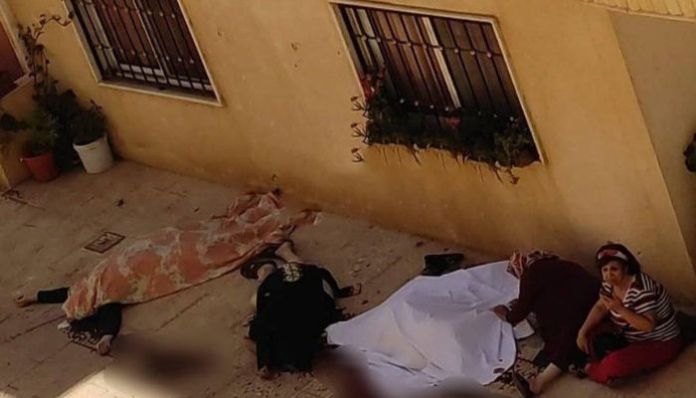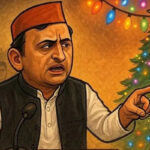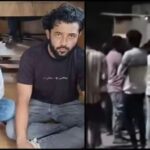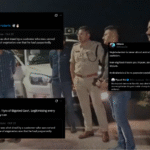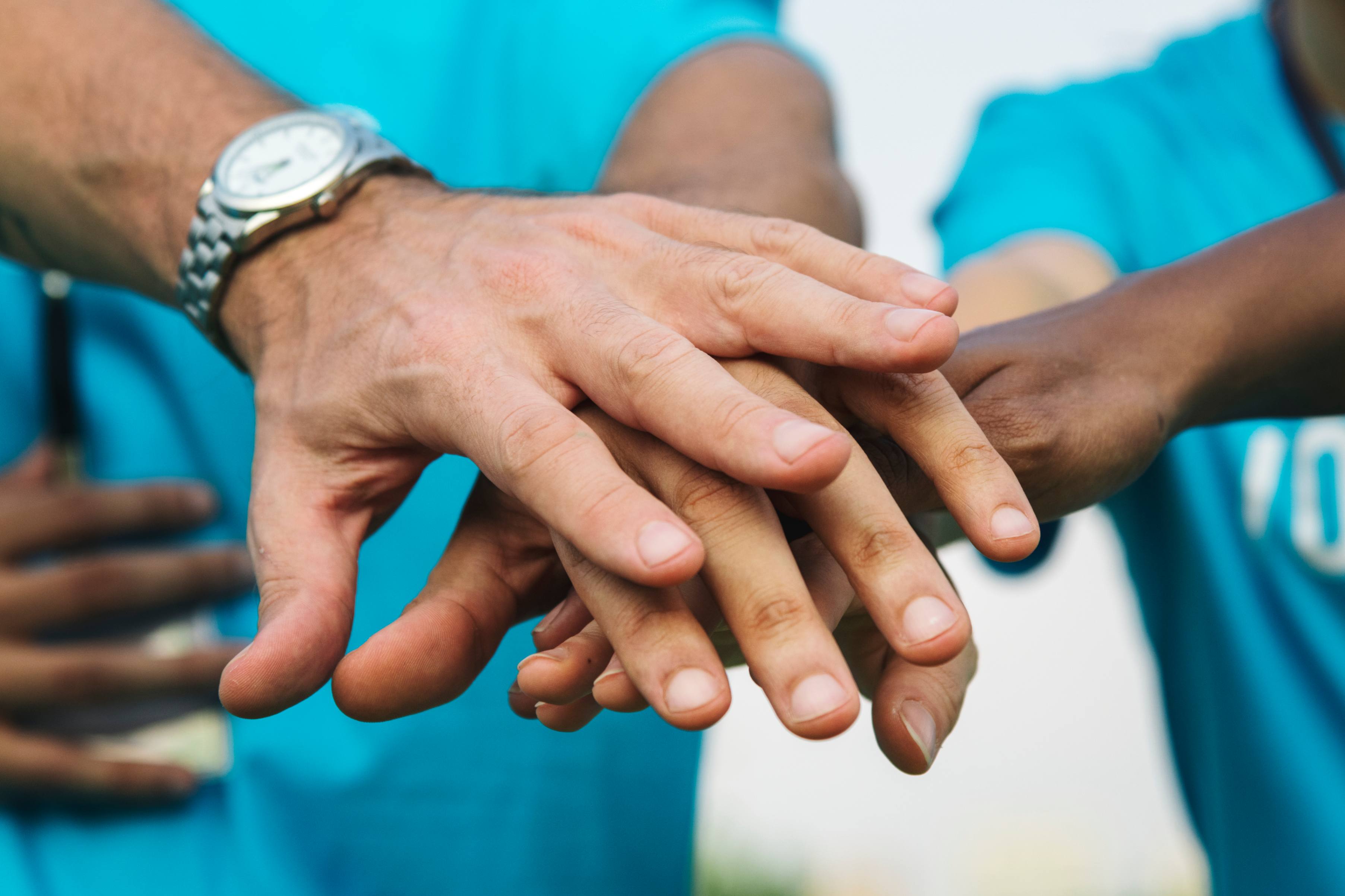The moustache was sacred, a symbol of faith and identity for generations of Druze men. So when the masked fighters pinned down Sheikh Kamal in Suwayda, Syria, and shaved his face raw with a rusty blade last week, they weren’t just humiliating an 80-year-old cleric, they were erasing a people. His whimpers, captured on a terrorist’s phone and gleefully shared online, echoed a horror Yazidi survivors know too well—a horror the world vowed “Never Again” to ignore. Yet here we are, again!
The Ghosts of sinjar: A prologue to suffering
Eleven years ago this August, Islamic State terrorists descended on Sinjar, northern Iraq. Their mission: Exterminate the Yazidis, an ancient ethno-religious community they deemed “infidels.” Men were executed en masse, dumped in over 80 unmarked graves. Women and girls, some as young as nine, were sold in slave markets.
“ISIS captured us when we were trying to reach Sinjar Mountain. At the beginning, they only separated my father from us in Sinjar. They did not take me from my mother because I was only 14 at that time. Then, they took us from Sinjar to Til-Afar. Life was so bad there. We did not have enough food or good shelter. After 8 months, they separated us from each other. They sold me more than 10 times to different people,” Badyra, 24, narrated.
The numbers still steal breathing as 5000+ Yazidi men and older women were slaughtered, 6,000+ women and children were enslaved, 2,800+ are still missing, likely in graves or bondage, 400,000+ displaced in squalid camps, forgotten. Today, mass graves pepper Sinjar like open wounds. Reconstruction is paralysed by political feuds. Survivors battle trauma without therapy, justice without courts. “We have been forgotten,” whispers Bahar, 32, in a Duhok displacement camp. The world moved on. ISIS didn’t.
11 years ago, on Aug 3, 2014, ISIS began the Yezidi Genocide.
Thousands were killed. 6,400+ women & children enslaved. Pregnant women died fleeing.
2,700+ still missing.
A genocide in the 21st century—and the world did not stop it.#YazidiGenocide #NeverForget pic.twitter.com/y9vqWVqBvS— Zidan Ismail (@zidan_yezidi) July 8, 2025
Damascus 2025: The Druze crucible
Now, history convulses in Syria’s south. Since Sunday, Suwayda, a Druze heartland, has been drowned in blood. Bedouin tribes, backed by Syria’s new regime, clash with Druze militias. The spark? A robbery. The Tinder? Sectarian hate was stoked by President Ahmed al-Sharaa, formerly known as Abu Mohammad al-Jolani, an Al-Qaeda warlord who rebranded himself in a suit.
In an exhibition of atrocity, Government-aligned forces stormed a Radwan family wedding hall on Tuesday (15th July), murdering 15 unarmed guests. “I lost nine close friends… They shot them like dogs,” Maan Radwan told the Guardian from London. Videos show bodies splayed in blood-pooled rooms. Snipers now pick off civilians daring to retrieve corpses.
To eradicate their culture, Druze moustaches, religious symbols are forcibly shaved. Clerics are tortured. Homes are torched to chants of “Swine!” As of Wednesday, 250+ lie dead, including 21 executed “field-style”. “No electricity, water, or internet. Landlines dead. We’re caged with killers,” Fadi Hamdan, a Suwayda carpenter, told CNN. Hospitals overflow; surgeons operate by phone-light on neighbours they recognise.
To President Ahmed al-Sharra, Interior Minister Anas Khattab, and Defense Minister Marhaf Abu Ghasra:
If you want the world to see Syria as a serious, sovereign nation-state, then teach your army to act like one. Shaving the beard and mustache of an elderly Druze man of faith -… pic.twitter.com/R21kLJVFAP— Aimen Dean (@AimenDean) July 15, 2025
The World’s silence: A chorus of complicity
As tanks rolled into Suwayda, global reactions ranged from muted to morally bankrupt. Secretary-General of the United Nations António Guterres issued a statement “condemning violence”, a hollow echo as social media filled with videos of Druze elders begging for rescue. While the European Union offered “concern” while accepting Jolani’s “moderate” rebrand. The EU gifted his regime $235 million in February blood money for suits, not salvation.
Apart from that, during the Biden administration, US has already sent $1.2 billion to Syria after Jolani took power. In March, Jolani’s forces slaughtered minorities with ISIS-level brutality. A commander ordered troops: “Do not leave alive any Alawite… Slaughter them all, including children in bed.” Yet headlines yawned. Again.
Why Israel strikes: The unspoken fear
Wednesday (16th July), Israeli air raids on Damascus, collapsing the Defence Ministry, shaking the presidential palace—weren’t mere geopolitics. They were a scream into the void that “We see you. We remember.”
Israeli Defence Minister Israel Katz vowed “painful blows” until Syria withdraws from Druze areas.
“The Jews know they’re next,” says Moshe Levi, a Golan Heights Druze teacher. “Who wiped out Yazidis? Islamists. Who slaughters Druze? An ex-Al-Qaeda regime. Who’s left? Us.” When Netanyahu pleaded with Israeli Druze not to cross into Syria (“You’ll be murdered or taken hostage!”), It wasn’t just strategy, it was recognition of shared peril.
Israel’s critics decry “violations of sovereignty.” But what sovereignty exists in a nation led by a terrorist who films himself burning Druze holy images? “Europeans flocked to shake Jolani’s hand,” scoffed Israeli Foreign Minister Gideon Sa’ar. “But jihadists remain jihadists—even in suits”.
Israel–Syria Strike Highlights
• Strike: Israeli air attack on Syria
• Target: Military sites near Damascus
• Hit: Iran-backed groups
• Damage: Heavy destruction, casualties reported
• Goal: Stop threats from Syrian soil
• Tension: Rising in the regionpic.twitter.com/98FQtSGRzR
— Tamal Roy (@tamalroy07) July 16, 2025
The recurring nightmare: The numbers of tear
During the years between 2014-2019, ISIS killed 5000+, displacing and enslaving 400,000+, with 2800 still missing, their fates buried in mass graves or hidden in bondage, met with global indifference. Then, this March, Alawites and Christians fell to the knives of Jolani’s rebranded terror regime: 7,000 butchered in Latakia, tens of thousands purged from their homes—a massacre answered only by empty condemnations.
Now, as you read this, the Druze bleed in Suwayda. Since Sunday, 250 souls and counting have been executed, mutilated, or burned alive by Jolani’s forces. Their ancient heartland is besieged, their holy symbols desecrated, while the world offers silence. Only Israel dares act—launching solitary airstrikes on Damascus—as the pattern screams truth: Minorities are exterminated one by one, while “Never Again” becomes “Not Our Problem”.
One of Julani’s fighters asked a Druze man, “What are you?”
The man replied, “I’m Druze.”
The fighter ripped out his mustache, slapped him across the face, and said, “You are a pig.”
https://t.co/XxfeupZHnV— Brother Rachid الأخ رشيد (@BrotherRasheed) July 16, 2025
Epilogue: The clock ticks for us all
As Syria “withdraws” troops under Israeli fire a temporary ceasefire brokered by U.S. pressure—the pattern chills: Genocide thrives where empathy dies. First Yazidis. Now Druze. Alawites. Christians. When minorities fall like dominoes while the world drafts “concerned” statements, the only question left is “Who’s next?”



